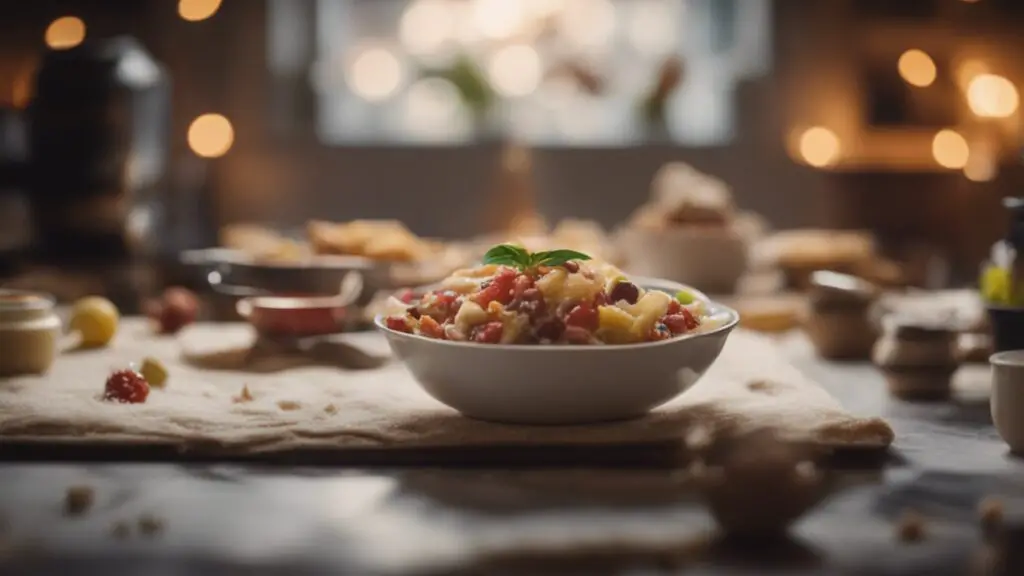

There is no precise count of the total recipes in the world. Estimating the exact number is challenging due to the vast diversity of cuisines and constant culinary innovation.
Delving into the world of recipes explores global diversity and culinary creativity. Recipes are more than mere cooking instructions; they reflect cultural heritage, regional ingredients, and historical evolution.
The range of dishes is infinite worldwide, from bustling city street food stalls to the archives of grandmothers’ handwritten recipe books.
With every region adding its unique twist and chefs continually experimenting, the number of recipes keeps expanding.
Food enthusiasts and professional chefs constantly contribute new combinations and flavors, ensuring the culinary world is an ever-growing universe of tastes and techniques.
The Quest for a Culinary Count


The captivating quest for a culinary count is as diverse as the palate it pleases. Enthusiasts and professionals alike wonder about the number of recipes in existence.
It’s like counting the stars in the sky—where do we begin? Delving into the global kitchen, this search uncovers the vast flavors that make up our world’s culinary landscape.
Challenges in Quantifying Global Recipes
Estimating the total number of recipes worldwide presents unique hurdles. Key concerns include:
- Recipe variations and regional adaptations.
- Undocumented or secret family recipes.
- The continuous creation of new culinary combinations.
Multiple factors influence the count. Language barriers, cultural diversity, and digital divides make a comprehensive tally difficult.
Web crawling and data aggregation offer some answers, but these technological methods don’t capture every kitchen’s creations.
Historical Recipe Accumulation
Cooking has evolved over thousands of years. Records of recipes stretch back to ancient texts.
Consider the classic cookbooks that laid the foundation for modern cuisine:
| Period | Notable Work |
|---|---|
| Antiquity | Apicius |
| Medieval Times | The Forme of Cury |
| Renaissance | Opera dell’arte del cucinare |
From manuscripts to digital uploads, the growth in recipe records is immense. Each historical document adds to today’s rich repository of culinary wisdom.
It’s a treasure trove of gastronomic delights, accumulating across generations. Each entry is a testament to humanity’s love affair with cooking.
Cultural Diversity in Cooking
Exploring how many recipes exist in the world unveils a tapestry of rich flavors, unique traditions, and culinary innovation.
Each corner of the globe offers a distinct palette of dishes shaped by history, geography, and the melting pot of cultures.
Let’s dive into the fascinating world of cooking, celebrating the cultural diversity that brings a smorgasbord of recipes to our tables.
Regional Variations and Local Ingredients
Local ingredients shape the backbone of regional cuisines. They leave a distinct thumbprint on every recipe, crafting dishes that resonate with the essence of each location.
Here’s how local treasures influence cooking:
- Freshness: Locally sourced produce often means peak freshness, enhancing flavor.
- Variety: Unique regional plant and animal life inspire various dishes.
- Sustainability: Using what’s available locally supports the environment.
- Community: Recipes evolve from shared cultural experiences and stories.
Dishes vary not just from country to country but between towns and villages.
The same recipe can have numerous interpretations, each telling a story of the local palate.
| Region | Ingredient | Dish Example |
|---|---|---|
| Mediterranean | Olive Oil | Grilled Seafood |
| South Asia | Spices | Curries |
| Latin America | Corn | Tamales |
Impact of Cultural Celebrations on Recipes
Cultural celebrations often serve as the birthing ground for iconic recipes.
Festivities showcase the finest dishes, each symbolizing something special. Here’s their impact:
- Unity: Making and sharing food brings people together, strengthening bonds.
- Heritage: Time-honored recipes are passed down, preserving traditions.
- Innovation: New twists on classics emerge, updating culinary narratives.
Festive specialties can mark seasons, harvests, or significant events. During these times, unique ingredients and techniques are spotlighted.
They become staples for future generations to cherish and recreate.
- Mooncakes during the Mid-Autumn Festival in China.
- Pumpkin pie for Thanksgiving in the USA.
- Holi sweets like gujiya in India.
From birthday cakes to wedding feasts, cultural celebrations dictate a variety of recipes rich in symbolism and community spirit.
These cherished customs keep the culinary world infinitely diverse and eternally innovative.
Digital and Print Recipe Repositories
In our quest to find culinary inspiration, we turn to vast collections of recipes. These repositories, both digital and print, provide endless ideas for both home cooks and professional chefs.
Countless recipes await in these treasure troves, highlighting the rich diversity of global cuisine.
The Rise of Online Recipe-Sharing Platforms
With the emergence of the internet, recipe sharing has transformed forever.
Food enthusiasts can now access unlimited recipes with just a few clicks.
Online platforms have become a central hub for those looking to try new dishes or share their creations.
- Food Blogs: Individual bloggers share unique recipes, often with personal stories.
- Social Media: Platforms like Pinterest and Instagram serve as visual recipe cards, enticing users to try new dishes.
- Recipe Databases: Websites such as Allrecipes or Yummly compile recipes from various sources and offer filters for dietary needs or ingredients.
Contribution of Cookbooks to Recipe Numbers
Despite the digital surge, cookbooks remain crucial in the culinary world.
These printed treasures contribute immensely to the overall count of available recipes.
| Year | Cookbooks Published |
|---|---|
| 2010 | 3,000+ |
| 2015 | 4,000+ |
| 2020 | 5,000+ |
Their impact extends beyond numbers. Cookbooks preserve cultural traditions and inspire generations of food lovers.
The Role of Innovation and Fusion
The world of cooking never stops growing. Innovation and fusion play a huge part. Chefs mix ideas from different lands to create something new.
Fusion Cuisine as a Recipe Multiplier
Imagine a kitchen where East meets West. Fusion cuisine is born in these spaces, and such mixing has led to a boom in recipes.
Every blend of cultures brings dozens of new dishes to the table. For example:
- Asian Tacos: Spicy, fresh flavors from Asia tucked into soft tortillas.
- Curry Pizza: The warmth of Indian spices spread on Italian dough.
- Kimchi Burgers: Classic American patties with a kick of Korean kimchi.
Each fusion dish adds to the global recipe count. Chefs never stop inventing, so the number of recipes keeps soaring. It multiplies!
The Growth of Food Technology and New Dishes
Food tech shapes how we eat. New tools let chefs push boundaries. They cook up dishes we never dreamed of.
Plant-based meats and 3D food printing are changing the game. Look at these advancements:
| Technology | Impact on Recipes |
|---|---|
| Sous-vide machines | Perfectly cooked dishes every time |
| 3D food printers | Create shapes and textures once impossible |
| AI in cooking | Analyze flavors to suggest new combinations |
Tools help us experiment. They lead to dishes that were pure fantasy just years ago. New recipes emerge every day, thanks to tech.
Estimating the Inestimable
Estimating the inestimable might sound like a quest to count the stars in the sky. Like stars, recipes are abundant cultural sparkles that light up our culinary universe.
No one can pin down an exact number. New dishes constantly emerge while old ones evolve, so the exact number remains a mystery.
Food Experts and Chefs Weigh in
Renowned food experts and chefs bring insight to this tasty enigma. They share knowledge from years in bustling kitchens and scribbling recipes in worn notebooks.
Each has watched the number of recipes multiply like dough rising in a warm room.
They stress it’s not about the sheer number but the stories and traditions behind every dish.
- Recipes passed down through generations tell of times long past.
- New creations spark with tastes and trends of modern days.
The Moving Target of Recipe Counting
Recipe counting changes daily. It’s a moving target we may never quite hit.
What matters most is the diversity and richness of the recipes brought to tables worldwide.
Every culture contributes its layer to the grand cake of culinary arts.
Home cooks and star chefs keep adding their special twist to classic dishes. They are the unsung heroes in this count.
Why the Exact Number May Not Matter
Imagine counting the stars in the sky, an almost impossible task due to their boundless nature.
Similarly, calculating the exact number of recipes worldwide proves challenging, if not impossible.
Yet, this vast uncertainty is not a stumbling block for culinary enthusiasts but a doorway to endless possibilities.
The power of recipes lies in their quantity, experiences, and creativity.
The Infinite Nature of Recipe Variations
The beauty of cooking lies in the variations. A recipe can have countless adaptations, each influenced by regional ingredients, cultural traditions, or personal tastes.
These tweaks and twists mean that recipes are not static but living documents that evolve.
They reflect the season’s bounty, a grandmother’s touch, or a chef’s inspiration. The combinations are as limitless as the imagination, thus defying any attempt to quantify.
Let’s consider the example of pizza:
| Base | Toppings | Preparation Style |
|---|---|---|
| Wheat flour | Pepperoni | Wood-fired |
| Gluten-free | Mushrooms | Stone-baked |
| Cauliflower | Vegan cheese | Grilled |
Each variation gives birth to a unique dish, symbolizing the beauty of diversity in culinary art.
Celebrating Gastronomic Creativity
Food is not just about sustenance; it’s a form of expression. Chefs and home cooks pour their hearts into their dishes, creating art on a plate.
Each meal tells a story, whether a traditional holiday dish passed down through generations or an innovative creation that challenges the palate.
- Traditional Dishes: Rooted in heritage, adapted over time.
- Personal Touches: Signature flavors make each recipe unique.
- Innovations: Modern twists that redefine conventional cooking.
Restaurants and family kitchens become the stages for gastronomic creativity, where every recipe is a testament to human ingenuity.
Here, the act of sharing a meal goes beyond nutrition — it’s a celebration of cultural heritage and personal journey, all conveyed through the language of food.
Frequently Asked Questions
How Many Recipes Are There in the World?
Due to cultural diversities and continuous culinary innovation, the exact number of global recipes is unknown.
Estimates reach into the millions, reflecting the vast spectrum of global cuisine.
Which Food is No. 1 in the World?
It’s subjective, but pizza is often the world’s number-one favorite food. Its global popularity and versatility make it a top choice.
How Many Types of Dishes Are There in the World?
Estimating an exact number is challenging due to the global and regional variations and cuisines.
However, thousands of distinct dish types worldwide reflect diverse cultures and culinary traditions.
How Many Foods Are There in the World?
There is no definitive count of foods globally due to the extensive variety of regional dishes and ingredients.
How Many Global Recipes Exist?
There is no definitive count of all recipes worldwide since cuisine constantly evolves, but millions of dishes reflect global culinary diversity.
Conclusion
Embarking on the quest to quantify global recipes is a culinary adventure with no definitive end.
It ignites curiosity and exploration, illuminating the diversity of our planet’s palate. As we embrace new dishes, we contribute to this ever-expanding mosaic of tastes.
Remember, each recipe you discover is a testament to our shared human creativity in the kitchen. Keep cooking, keep exploring, and relish the flavors of the world.







